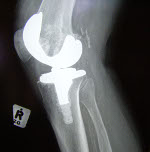 Stem cell research is slowly but surely gaining traction in the orthopedic community. Joseph Purita, MD, medical director of The Institute of Regenerative & Molecular Orthopedics in Boca Raton, Fla. and medical director of StemMD, began research in stem cell therapy eight years ago. His work with stem cells in musculoskeletal procedures has demonstrated promising results. Dr. Purita has recently formed a network, StemMD, which invites orthopedic groups to explore the results of his work and try the stem procedures for themselves. Dr. Purita shares five points on where stem cell therapy is today and how it will continue to shape the field of orthopedics.
Stem cell research is slowly but surely gaining traction in the orthopedic community. Joseph Purita, MD, medical director of The Institute of Regenerative & Molecular Orthopedics in Boca Raton, Fla. and medical director of StemMD, began research in stem cell therapy eight years ago. His work with stem cells in musculoskeletal procedures has demonstrated promising results. Dr. Purita has recently formed a network, StemMD, which invites orthopedic groups to explore the results of his work and try the stem procedures for themselves. Dr. Purita shares five points on where stem cell therapy is today and how it will continue to shape the field of orthopedics. 1. Stem cell research and biologics are gaining widespread acceptance. Stem cell research has had to wade through a sea of skepticism, but the resulting procedures are becoming more well-known and accepted. "We have done stem cell treatment on a small scale for years with procedures such as microfracture surgery," says Dr. Purita. Procedures, such as platelet rich plasma injections, are being regularly used in professional athletes. More studies are being done and stem cell therapy is often referred to as the future. Improvements will continue to be made and stem cell treatment will be brought to the forefront of orthopedic care.
2. A combination of stem cell types generates optimal results. The basis of stem cell treatment lies within a patient's own cells. Many physicians believe that mesenchymal cells alone will provide the best results, but Dr. Purita has found a combination of mesenchymal cells and hematopoietic cells to be the most effective treatment. "Fat is a rich microenvironment of mesenchymal stem cells, but hematopoietic cells which are very prominent in bone marrow are the drivers of tissue regeneration. The key to what we do is the combination," says Dr. Purita.
3. Procedures may provide a speedier of recovery. Surgical procedures often require a significant period of rehabilitation. Though stem cell therapy does not provide patients with an instant cure, it may provide a more rapid recovery. Dr. Purita describes a patient that received stem cell treatment after a baseball injury instead of surgery. He was playing baseball six to eight weeks after receiving the injection.
4. Stem cell treatment remains uncovered by insurance companies. Stem cell treatments are currently outside of the realm of insurance. Patients receiving the procedures are paying for them out of pocket. Dr. Purita predicts that insurance companies will begin covering stem cell treatment within the next 10 years. "A tidal wave of physicians will begin offering the procedures and patients will demand coverage," says Dr. Purita.
5. Stem cell therapy may begin to replace some surgical procedures. Though minimally invasive surgery is driving orthopedic and sports medicine care, surgery will always be, to an extant, invasive. "Stem cell therapy is the truly minimally invasive procedure. Stem cells are how the body heals itself and they do the job better than surgery ever could," says Dr. Purita.
Stem cell treatment is still in its infancy; orthopedic surgery has not been replaced, but as time goes on the approach to orthopedic injuries could radically change. "Eventually with stem cell treatment, we will do less surgery and dramatically speed up our patients' recovery time. Twenty years from now, total joint replacements will be extinct," says Dr. Purita.
More Articles on Sports Medicine:
10 Orthopedic Surgeons Serving as Editors-in-Chief of Professional Journals
Dedication in Orthopedics & Challenges Ahead: Q&A With Dr. Jonathan Fox of Arizona Orthopaedic Associates
5 Key Qualities of Orthopedic Surgeon Leaders


